The county fairgrounds are unusually quiet for the week before the fair. It’s yesterday afternoon, and it is cool. Big thunderheads cruise over the mountains that reach up to the sky along this valley, the Lemhi. The clouds promise at least thunder, and perhaps a shower.
I have many memories here, with my 4-H daughters going through the paces in horse competitions. There were tears of both joy and sorrow—winning and losing—shed in this arena dirt. I feel on my hands the matrix of straw, dry manure and gravely clay I sit on, along a panel fence, as I watch the big crack willows shudder in the pre-thunderstorm breeze.
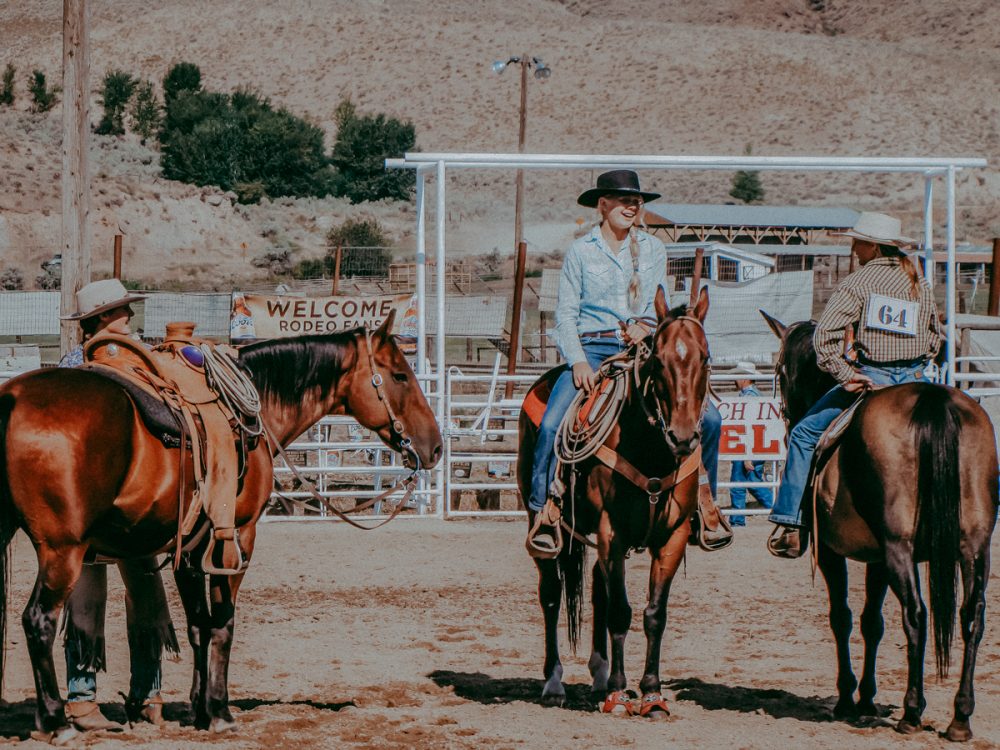
There are memories in this dirt, of girls growing up, of the stress of competition. And the beauty of it; displaying months of work for all to see, and to judge. We’ve entered draft horse driving competitions here—but now, sadly, many of those big horses have done gone on. They are old friends passed by.
But today, I have no showing to do; just shoeing. We have nine saddle horses to shoe, and my good friends and farriers Caleb and Arnie are hard at it. We decided to meet here in the middle of our distant Central Idaho mountain geography, dividing the miles of road that separate us. You have to yield to the rugged country and follow rivers and canyons instead of traversing mountain ranges. We can’t travel as the crow flies and that makes distances feel immense in our county the size of a state, home to only 5000 people. So we submit to valley or river corridor travel with our trailers and trucks, and here we all are: It’s Arnie, from Salmon, Idaho; Caleb, from Gibbonsville, pressed up against Montana; and Melanie and I from the high Pahsimeroi.

The clink of hammer on anvil and the saw of rasp are in the air now. Every now and then, the vague murmurings of Caleb or Arnie can be heard. They say something to their charge as they get under them to lift and care for feet, as they both had thousands of times before.
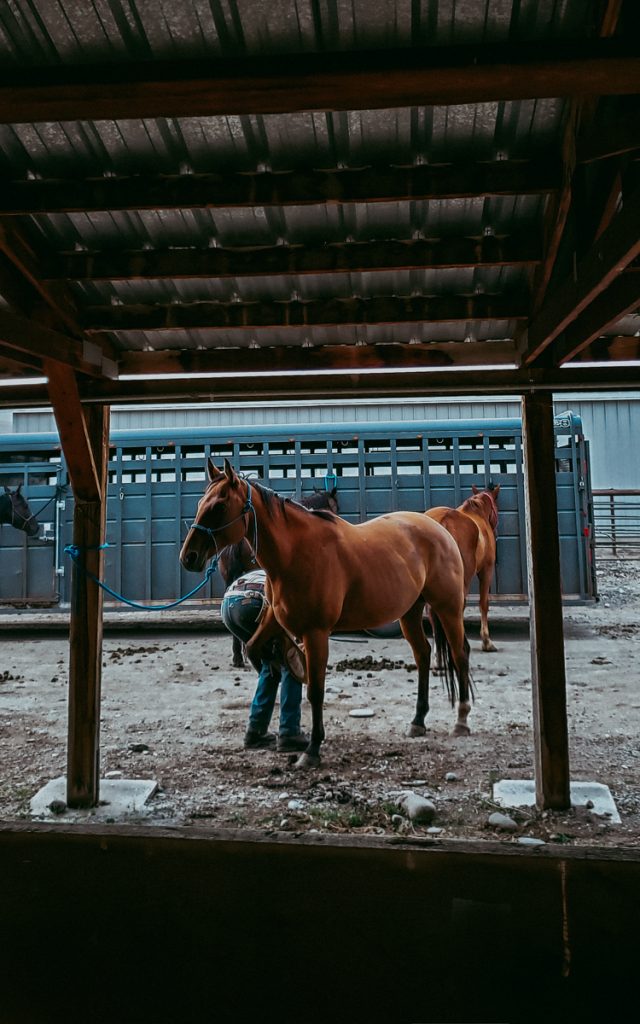
What is nice about these two farriers is that they are also horsemen. Not all farriers are; and they then have a hard time reading subtle signals and connecting with the horses they shoe. That leads to disrespect from the horse and escalation of behavioral problems. What’s more, not knowing horses often results in poor shoeing.
I can also shoe to some degree. I wouldn’t ever call myself journeyman, but I can get by. I’ve never gotten really good and fast at it for the simple reason of physics. I am 6 foot 6 inches tall, leaning into the 6 foot 7 range, and at this point in my life, whenever I shoe a horse, my back tells me that I shouldn’t have.
So Arnie and Caleb enter in, professionals that they are. And my back thanks them. They have the muscle memory and reflex to not kill themselves with joint ills afterwards. They work efficiently, and precisely.
Horseshoes are needed in this, the backbone of a continent. Hat Creek sits high on a ridgeline of mountain and canyon just one range detached from the Continental Divide. We go through two sets of the iron plates a year; they simply get worn clear through, and we need to renew them. In addition, the horse’s feet grow, pushing shoe nails out. Hooves actually grow over the shoes, and it gets time to peel the old plates off (plus, they are worn so thin that often, you can break them in half with a tweak by your fingers).
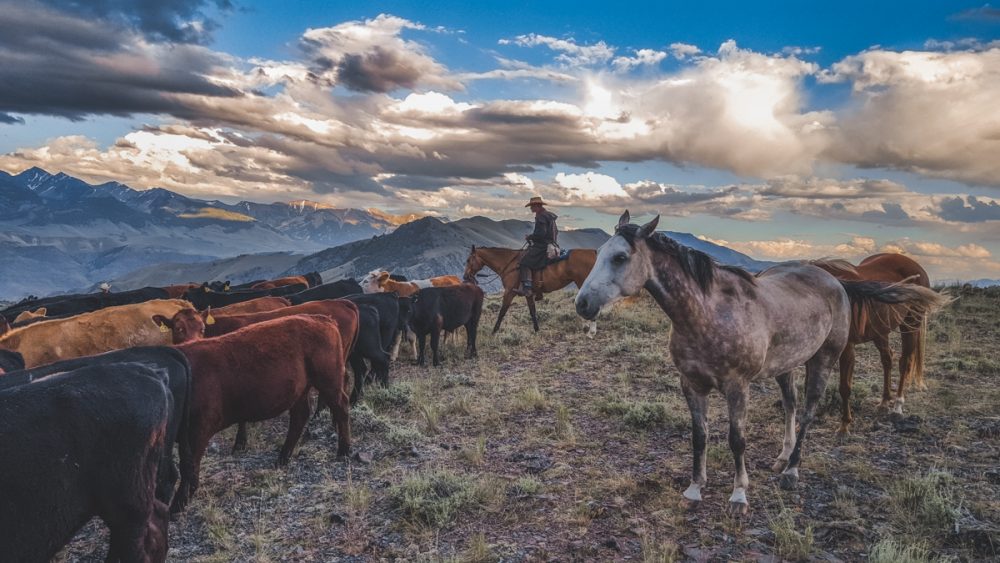
Very few horses can make it without; we’ve had occasional ones with natural hard feet that somehow prevail over the flinty volcanic rocks and cobble. They usually have darker feet, and can be difficult to shoe due to the hardness of their hooves.
You are often reminded of just how rocky the landscape is, even in thick grass or sagebrush, by the clatter and scrape of metal on parent material. And I am grateful that even while traversing those unseen rocks, my mount’s feet are safe. Some nights you are reminded visually about the constant conflict between foot and rock that is now steel and stone. As we roll into camp too late with the herd, in the gathering darkness I look up to one of my comrade’s mounts, and there are sparks flying off of their shoe on the flinty substrate.
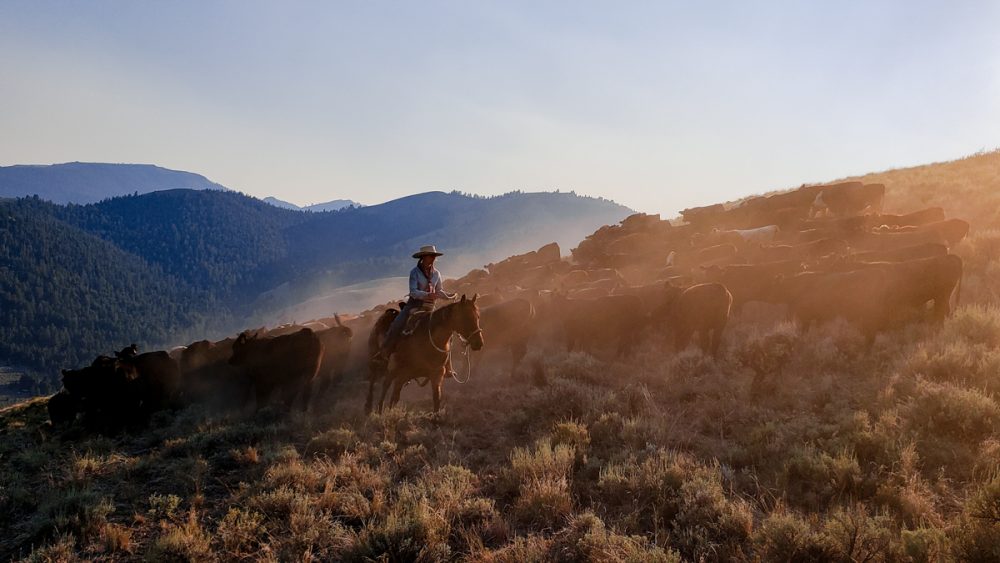
Though necessary, horseshoeing isn’t without risk. I have several lifetime scars on my hands and arms from yet un-clinched nails when an impatient horse pulled away from my grasp. Every farrier I know has stories of getting tromped into the dirt or launched skyward by horses who though they’d had enough of this person packing nippers, knife and nails underneath them.
But for the most part, shoes are a savior for the horse. There is only one memory I have when the iron plates caused an unexpected problem for an equine. It was on a sorrel colored gelding, named Sandy, in the high Lemhi Valley on the Clark Ranch.
I was working for Lloyd Clark at that time; not for money, mind you, but just for experience and friendship. I would just show up for Fridays and weekends. This was in the early 1990s, but on Lloyd’s place it was still the 1890s. Horsepower still drove much of the ranching operation; nearly everything else was human power on the end of a pitchfork or shovel.
With one exception. There was electricity. Sure they’d just gotten it only 15 years ago; but power it was, and it finally put an end to kerosene lamps and candles in house and barn.
Lloyd Clark was a jack of all trades. He was a horseman, farmer, and rancher of both cattle and sheep. He was an expert wrangler and packer, and transported many guests and gear safely across thousands of miles of rocky trails and high peaks. He could metal forge from scratch all manner of tools and technology for the horse powered farm.
He even made his own horseshoes for quite some time, until the siren song of mass production factory shoe iron became too great to bear. So he bought those factory shoes and happily shod his horses with them.
And so, he put a set on gelding Sandy. Shoes were needed on him to traipse safely across the rocky outcrops of quartzite that defined the rangelands around the hills beyond the ranch. Lloyd was to ride out on Sandy to check sheep with me. But the gelding I rode that day was barefoot. And that observation somehow played out into my full realization of what Lloyd Clark was not.
He was not an electrician.
Bare copper wires were strung and hung on some of the earliest in history glass insulators, threaded between leaning lodgepole pine poles shallowly dug into the rock substrate of the Clark Ranch corral area. The makeshift wiring satisfied Lloyd’s desire for the convenience in the form of incandescent lights in barns and sheep sheds.
Lloyd himself wielded the power of power to the aging and graying log buildings of his ranch, and did what he could to bring the place into the industrial age.
But there were problems with Lloyd’s ramshackle wiring designs and those shortcomings weren’t always immediately known. Sometimes it took another being to discover them.
That being was one Sandy horse. I rode through the main barnyard gate first, astride my gelding, bound for sheep in rocky hills, albeit barefoot. I pulled him up off his trot, and turned to watch Lloyd follow.
He pointed Sandy through the big lodgepole pine gate standard, and got just halfway through, when the gelding shot straight skyward, and took off toward me in a rolling buck. I watched Lloyd’s 75 year old frame snap like a rag doll for what seemed eternity on the back of a bronc, but was only 2 or 3 seconds.
Despite age and the forces of physics, he stayed on.
The gelding Sandy pretty quickly settled and was soon fairly quiet, but still quaking. He looked nervously back to the gate, ears pointed directly at it while searching for the ghost of a tormentor that put him in such a violent state of recoil.
“Are you OK?” I asked Lloyd. He was old, wrinkled and brittle looking enough that I thought maybe he’d broken some bones by sheer whiplash.
“Yeah…I’m OK,” he said in his gravelly voice. And then he grinned. “I just don’t know what got into this gilting.” A “gilting” was what all of the older cowhands called a gelding in these parts.
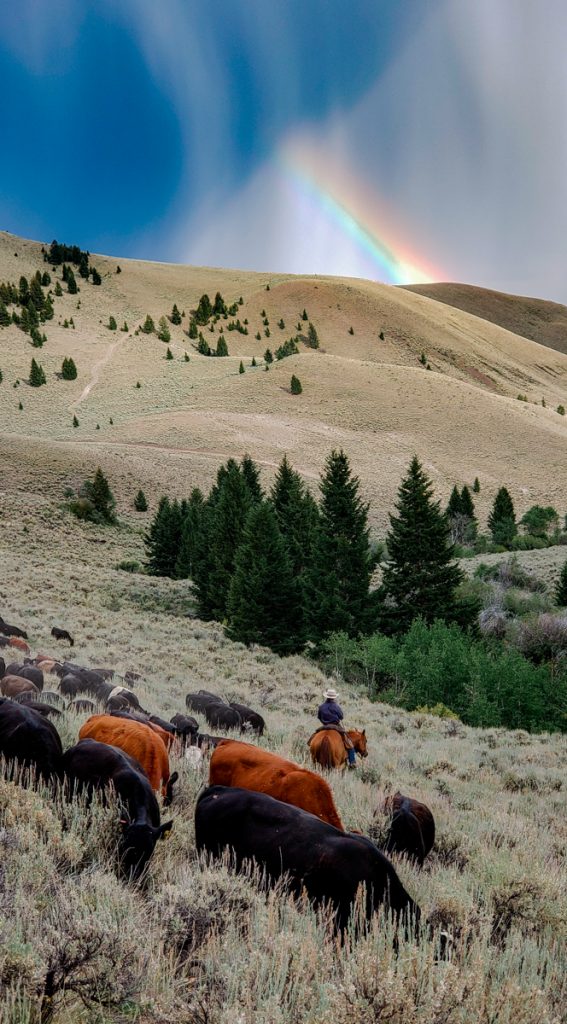
Lloyd slowly turned the horse back to the gate, and rode up to within a few feet of the threshold. The gelding Sandy stopped dead in his tracks. Lloyd dug heels into sides, and tapped him on the butt, but Sandy would go no closer. Nothing Lloyd could do would make him go back. Finally Lloyd got off and went around into the corrals through another gate, Sandy in tow. No problem.
But then, when Lloyd tried leading the horse back through the gate, the gelding dug front feet in, and was absolutely intractable.
No can do, boss.
And then, I saw it. It was a copper wire, stretched between the two tall gate posts, about 10 feet above the gate itself, and the glass insulator nailed to the lodgepole pine post on one side was gone. The copper just rested on the rusty nail.
Stray voltage. Somehow, that gray lodgepole pine post that Lloyd wrestled from the woods above the ranch in probably 1950 was conducting a little bit of power to the ground, made richer by perhaps a change in the soil or soil moisture. And Sandy, keenly equipped with those shiny new iron shoes, somehow nicely completed the circuit. The unshod gelding I was on felt nothing.
Sandy became a lightbulb, and not a happily glowing one at that. He never would go through that gate again, at least as I knew him. It was a simple solution in his mind. Though no other horse seemed to be bothered by that gate, Sandy would simply just have to go around.
Electricity is a strange and unpredictable thing when left to its own devices outside the confines of an insulated wire. And Lloyd knew that. I don’t know if he ever got to fixing that stray current issue—Lloyd was getting older by the day, and things often got away from him. Much of the ranch was falling down around him. But he didn’t seem to be bothered by that. He was more- much more- about family and friends than ever keeping up with the nonsense of the day to day. It was the path he had chosen, and I think, to a large degree, he had made a wise choice.
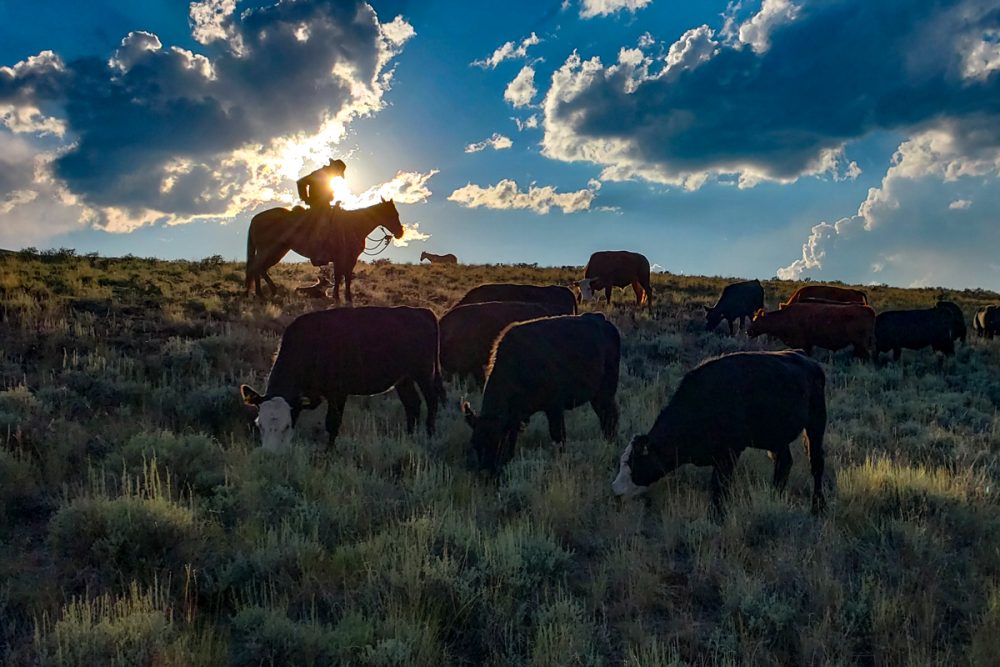
He always made a place for anyone to visit. I had often shared a table with wayfaring strangers in the Clark kitchen. I’m not sure where Lloyd and Beva, his lovely wife (and excellent cook), would find them. But they would come to dinner often, and have a place to stay afterwards. These were the things of value for Lloyd; it wasn’t about pride of production in agriculture. For him, it was as if the ranch formed a framework for relationships that would last longer than old barn wood and faulty copper wiring ever could.
And I hope Caryl and I can always maintain that same vision.
Happy Trails. Glenn, Caryl, Girls and Cowhands at Alderspring
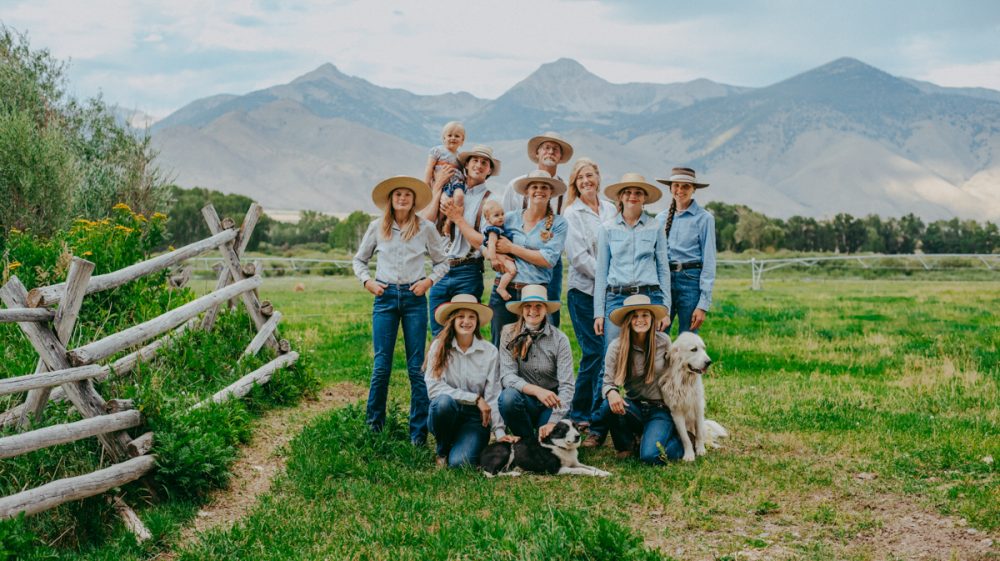





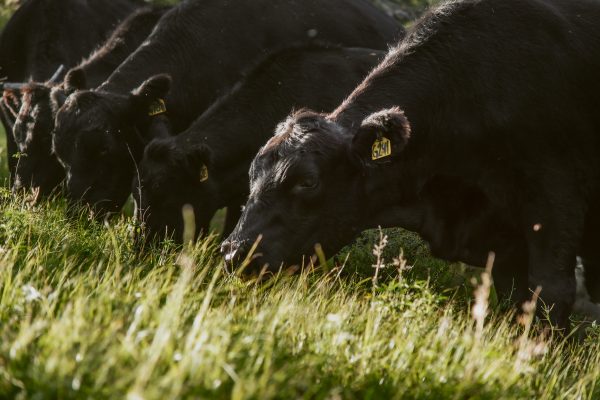

Mike Selleck
Thanks for your stories Glenn.
-Mike
Pat Boice
Love your stories!
Glenn Elzinga
Thank-you, Pat
Perry L.
I enjoy reading about and viewing the photos of the awesome Idaho country where you live and work. I live in central Florida, but I’ve visited your state, and near your “neck of the woods†a few times. In 2017, my grandson and I climbed to the summit of Mt. Borah, making it number 46 in my quest to bag all of the U.S. fifty. The mountains and valleys out there are wonderful.
Glenn Elzinga
Climbing Borah is quite an accomplishment, and a beautiful climb. I hope to do it again with some of my kids next year.
Glenn Elzinga
Climbing Borah is an accomplishment! I hope to climb it again with my kids next year.
Hugh
Enjoyed your electrifying tale. If u use any electric fence, don’t touch the woody stem legumes that have made contact with wire, I know you have more advise for me than I for you but is good to laugh at others pain. One of my goals was to fatten a steer on grass only in 18 months in Mississippi, I have gotten real close, pretty sure I did it and he even had couple month setback from foot issue, healed with minerals, not chemicals. Grace and peace.